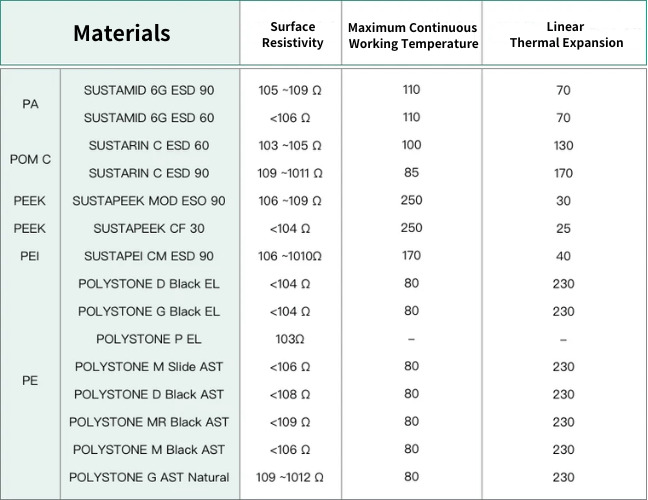Overview
- Industrial Manufacturing and ESD Control: ESD poses significant risks in manufacturing, affecting component performance and yield rates.
- Roechling's High-Quality ESD Materials: Roechling's ESD materials maintain physical properties without excessive antistatic additives.
- Variety of Roechling ESD Materials: Roechling offers ESD materials with diverse resistivities and temperatures for various applications.
- Understanding ESD: ESD is an electrical charge imbalance affecting materials, differentiated by surface resistance.
- Testing for ESD Compliance with Roechling: Roechling advises specific tests for ESD compliance, offering sample testing for certainty.
Electrostatic Discharge (ESD) might seem like a commonplace phenomenon, yet it harbors the potential for catastrophic consequences within industrial manufacturing and product performance. This article delves into the critical subject of ESD, elucidating the severe damage neglecting ESD can inflict on your products and processes. The stringent demands of industrial environments necessitate meticulous control over static electricity; failure to do so could degrade product performance, reduce production yield, and even pose risks to human health. We will explore the selection of suitable ESD materials to shield your products from static harm, diverging from conventional methods to introduce Rochling's high-quality ESD materials known for their exceptional antistatic performance while retaining key material characteristics. Finally, we'll share how to verify if the materials you're using meet ESD standards, ensuring the safety of your processes. Join us in navigating the realm of ESD and learning how to protect your products and enhance production efficiency.
1. Beware! Ignoring Material Electrostatic Discharge (ESD) Can Severely Damage Your Products!
In the realm of industrial manufacturing, where environmental conditions are rigorously controlled, managing static electricity is paramount. ESD can deteriorate component performance or even lead to failure, and it may disrupt the operation of nearby instruments and equipment, resulting in lowered production yields. For instance, during the packaging of electronic products, the extremely small internal IC chips can be greatly damaged by inadvertent static conduction, shortening their lifespan or causing complete failure. This also poses a potential risk to human health. Hence, in industrial processes, maintaining high standards for "static electricity" is crucial to avoid jeopardizing product quality and eliminating the risk of harm to humans.
2. Roechling's High-Quality ESD Materials: Solving Your Static Troubles
Many plastic manufacturers add excessive antistatic substances to their products to prevent static, inadvertently turning them into conductive materials and compromising their physical properties, such as wear resistance and strength. Unlike others, Roechling materials excel in performance, allowing for the selection of antistatic materials without sacrificing other critical material properties.
Roechling ESD Material Selection

3. An Overview of Electrostatic Discharge (ESD) Resistance
ESD, or Electro Static Discharge, refers to an imbalance of electric charges within or on the surface of a material. This imbalance creates an electric field that can affect other objects. ESD is defined as the rapid, spontaneous transfer of static charges induced by a high static field. By incorporating conductive substances into insulating materials, they can be made less insulating, allowing static electrons to be dissipated.

4. Confirming Your Materials as ESD Compliant
Roechling suggests the following methods and instruments for testing whether your current materials are ESD compliant, mainly categorized into two types.
- Surface type: Uses two long electrode strips internally, resembling tracks, suitable for flat materials but not for rod-shaped or small-sized materials due to potential contact issues leading to inaccurately high resistance readings.

When testing materials, it's crucial not to conduct tests directly on the surface of newly manufactured rod materials. Due to the heating and molding process involved in their production, the surface of these rods is significantly oxidized, leading to inaccurate measurement values. Therefore, to obtain precise data, the surface of the material must be removed before measurement.
- Pen type: Features two electrodes at the pen tip for touching and measuring rod-shaped materials.

If you're uncertain about whether your materials are ESD compliant, you can provide us with a sample of the material currently in use. We can assist in sending it to the Roechling laboratory in Germany for testing, to confirm whether it meets ESD material standards. If you require ESD materials, please feel free to call us for consultation.